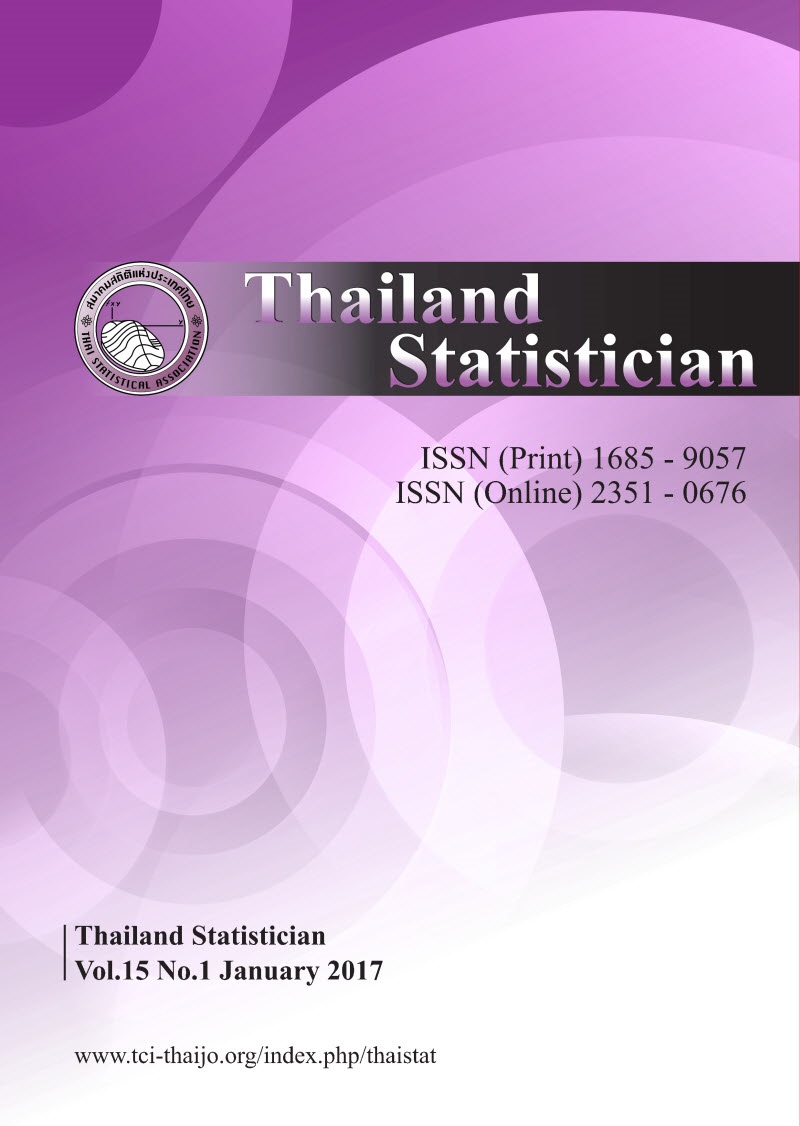The Comparison of Efficiency of Control Chart by Weighted Variance Method, Scaled Weighted Variance Method, Empirical Quantiles Method and Extreme-value Theory for Skewed Populations
Keywords:
average run length (ARL), control chart, empirical quantiles, extreme-value Theory (EV), skewness, scaled weighted variance (SWV), weighted variance (WV)Abstract
The objective of this study is to compare the efficiency of control chart by Weighted Variance Method, Scaled Weighted Variance Method, Empirical Quantiles Method and Extreme-value Theory for skewed populations. The efficiencies of control chart are determined by average run length. The control chart in the study is X chart. Various values of the coefficient of skewness are 0.1, 0.5, 1.0, 2.0, 3.0, 4.0, 5.0, 6.0, 7.0, 8.0 and 9.0. Various values of the level of the mean shift equals to 0σ, 0.5σ, 1.0σ, 1.5σ, 2.0σ, 2.5σ, 3.0σ. The sample sizes are 3, 5 and 7. The data for the experiment are obtained through the Monte Carlo Simulation Technique and the experiment were constructed from 10,000 samples and repeated 1,000 times for each case. The result of the study is that the data have Weibull distribution at coefficient of skewness 0.1, 0.5, 1.0, 2.0 and 3.0. The Scaled Weighted Variance Method has the most efficiency sample size of 3 at coefficient of skewness 4.0, 5.0, 6.0, 7.0, 8.0 and 9.0. Extreme-value Theory has the most efficiency sample size of 3, with Lognormal distribution at coefficient of skewness 0.1, 0.5 and 1.0. The Weighted Variance Method has the most efficiency sample size of 3 at coefficient of skewness 2.0, 3.0, 4.0, 5.0, 6.0, 7.0, 8.0 and 9.0. The Scaled Weighted Variance Method has the most efficiency sample size of 3, with Burr’s distribution at coefficient of skewness 0.1 and 0.5. The Weighted Variance Method has the most efficiency sample size of 3, at coefficient of skewness 1.0, 2.0, 3.0, 4.0 and 5.0. The Scaled Weighted Variance Method has the most efficiency sample size of 3.Downloads
How to Cite
Pongpullponsak, A., Suracherkeiti, W., & Intaramo, R. (2015). The Comparison of Efficiency of Control Chart by Weighted Variance Method, Scaled Weighted Variance Method, Empirical Quantiles Method and Extreme-value Theory for Skewed Populations. Thailand Statistician, 5, 1–23. Retrieved from https://ph02.tci-thaijo.org/index.php/thaistat/article/view/34344
Issue
Section
Articles



